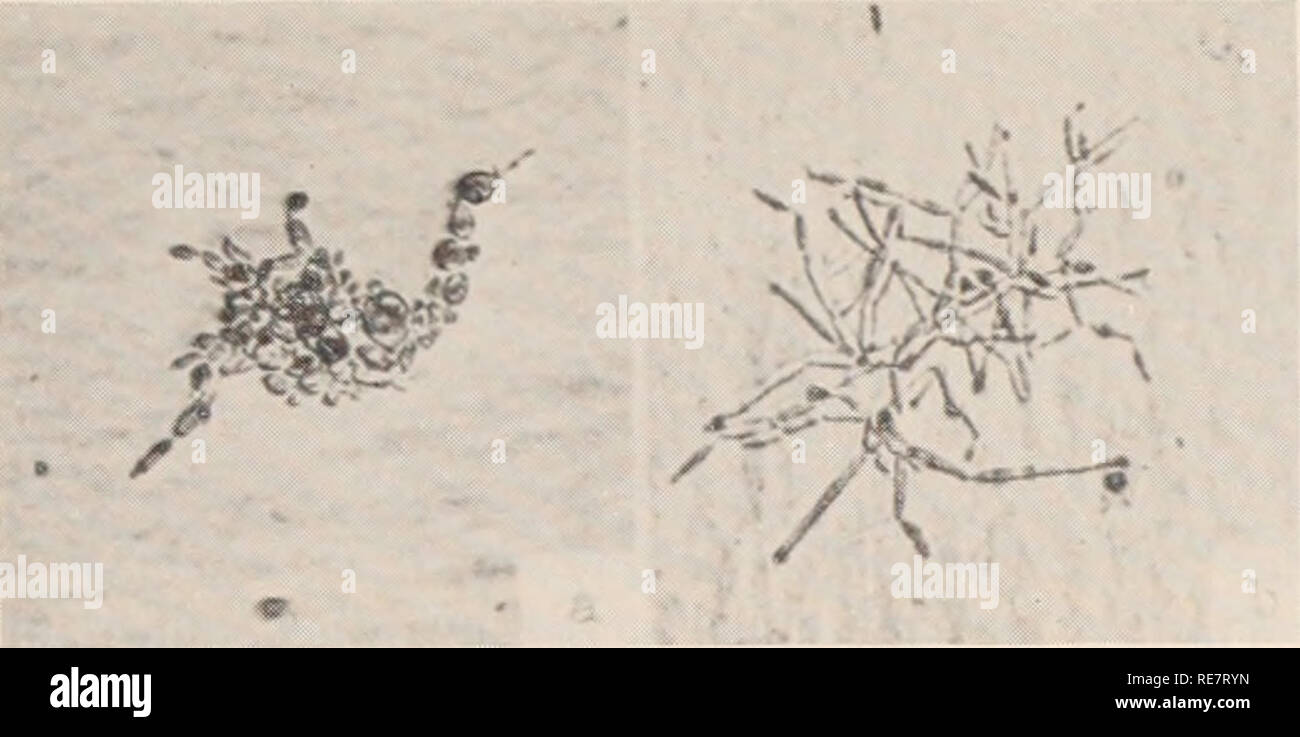. Corn smut caused by Ustilago maydis. Corn; Smut diseases. a chlamydospore may contain 2 nuclei. Ehrlich (85) observed binucleate chlamydospores and cytological studies indicated that the 2 nuclei could be either 2 haploid or 2 diploid or one of each. Some chlamydospores give rise to 2 promycelia. From such a spore, monosporidial cultures of 5 dis- tinct types were isolated (55). These could have been the product of a chlamydospore with more than 1 nucleus or the result of mutation. Delayed reduction.—Meiosis in U. maydis does not always occur in a regular manner. Segregation of factors for s

Image details
Contributor:
The Book Worm / Alamy Stock PhotoImage ID:
RE7RYNFile size:
7.2 MB (216.1 KB Compressed download)Releases:
Model - no | Property - noDo I need a release?Dimensions:
2240 x 1116 px | 37.9 x 18.9 cm | 14.9 x 7.4 inches | 150dpiMore information:
This image is a public domain image, which means either that copyright has expired in the image or the copyright holder has waived their copyright. Alamy charges you a fee for access to the high resolution copy of the image.
This image could have imperfections as it’s either historical or reportage.
. Corn smut caused by Ustilago maydis. Corn; Smut diseases. a chlamydospore may contain 2 nuclei. Ehrlich (85) observed binucleate chlamydospores and cytological studies indicated that the 2 nuclei could be either 2 haploid or 2 diploid or one of each. Some chlamydospores give rise to 2 promycelia. From such a spore, monosporidial cultures of 5 dis- tinct types were isolated (55). These could have been the product of a chlamydospore with more than 1 nucleus or the result of mutation. Delayed reduction.—Meiosis in U. maydis does not always occur in a regular manner. Segregation of factors for sexual compatibility and other characters are not always completed in the second division of the fusion nucleus. There may be partial reduction or none at all at the time of chlamydospore germination (51. 55. 279). Christensen (54). Eddins (83), and others (52. 203. 301, 358) obtained uninucleate monosporidial lines that caused infection when injected into the corn plant. They produced galls and normal chlamydospores that germinated like those derived from normal dicaryons and segregation also occurred for sex factors and many cultural characters. Therefore, it was generally assumed that the solopathogens were diploid lines (55). Sometimes, the diploid lines can be passed through the chlamydospore stage 2 or more times without any apparent genetic changes; although segregation of chromosomes usually occurs in the first chlamydospore generation. In a few instances, there was segregation of factors for color and cultural characters in first chla- mydospore generations, but not for sexual compatibility. In the second chlamydospore generation, there again was segregation of factors for color and cultural char- acters and also for sexual factors (55V Sometimes, the same promycelium may give rise to both haploid and diploid sporidia (51, 52). Reduction of factors for sexual compatibility may be delayed for at least 2 successive chlamydospore generations, whereas in other diploid lin